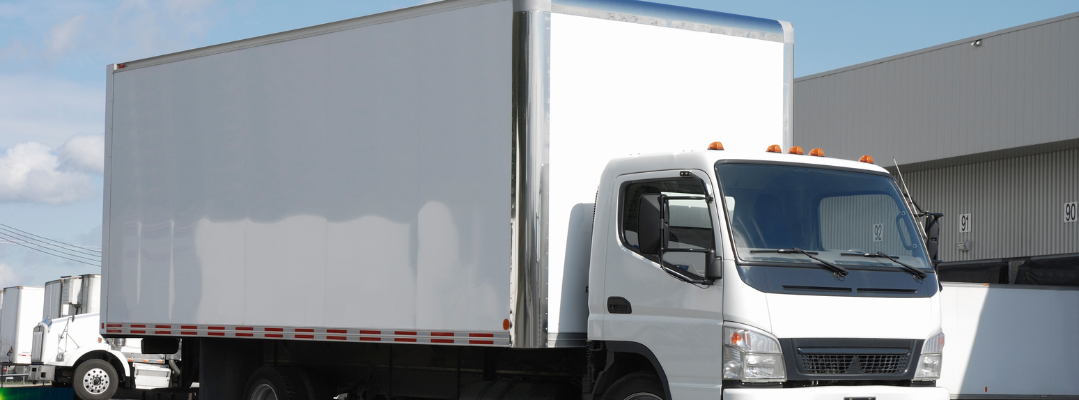What Size Truck Do You Need When Moving

Imagine renting a truck on your moving day to load all your household goods and realize that not all the boxes are fitting in the truck. This is why choosing the right truck size for your move is important. Getting the right size of moving truck also ensures proper packing and safe transit of your belongings. If the moving truck is of the wrong size for example too big or too small it can risk the safety of your belongings. Also, when compared to a small truck, a larger truck will be more expensive. To pick the idle truck for your relocation, you must evaluate several factors, including the amount of room you require. This guide will teach you everything that you may need to know about selecting the correct truck size for your move. So, if you want to save money, time, and effort, continue reading.
Recognizing Measurements

Most rental truck firms assess the capacity of their trucks in two ways that are cubic feet and real-world approximations for their trucks. Every rental truck holds a certain amount which is measured in cubic feet. This measurement takes the whole area of the truck’s storage into account. This measurement is useful, but unless you’re a pro who understands how to pack from floor to ceiling for optimal effectiveness, there will be something left out. Similarly, some rental moving truck businesses use real-world approximations for their trucks rather than cubic feet measurements. For example, you may have heard that a 20-cubic-foot truck can contain the equivalent of three rooms of furniture. Keep in mind that these numbers are simply estimations. In fact, the number of rooms a truck can store is determined by the number and size of objects in each room.
What To Consider When You’re Calculating Your Move

When deciding what size moving truck to rent, take into account a few factors, including whether you plan to hire a moving company, the number of rooms you are moving, how bulky your furniture that you intend to move, the number of mattresses you are moving, the number of fragile and antique items, the distance you will be traveling, etc. Along with this, you should also take into account the factors listed below.
- Overall Truck Size
After checking the vehicle’s volume consider the interior and exterior dimensions of the truck. Look at the length, width, and height of the cargo space to ensure that your largest items can fit comfortably. Measure your furniture and other bulky items to compare them with the available space in the truck. Also, check if the dimension can fit the parking area, driveways, and low-hanging obstacles, such as bridges and tunnels, etc. on the route.
- Load Volume
Load volume or load capacity means how much maximum weight a truck can carry. It is important to choose a truck size that can accommodate the weight of your belongings. Overloading a truck can lead to safety hazards and can cause damage to both the truck and your precious belongings. Consider things such as the weight of your furniture, appliances, boxes, and other items to get an estimate of the load capacity you will need.
- Availability Of The Vehicle
Popular truck rental companies and larger trucks are often in higher demand, especially during peak moving seasons or weekends. So, it is important to check the availability of the truck size you require. Start your planning process early and make a reservation in advance to secure the truck size you need at the time of your move. Waiting until the last minute may limit your options and you may also need to settle in terms of cost and truck size.
- Transport Costs
The rental cost of a moving truck can vary based on its size and fuel cost. Larger trucks will have higher rental rates compared to smaller ones. You can consider your budget and assess the cost-effectiveness of different truck sizes. If you rent a truck that is too large for your needs, you may end up paying more than you are required to. On the other hand, choosing a truck that is too small may require multiple trips or result in cramped and insufficient loading. As a result, it can risk the safety of your goods, so it’s important to evaluate all the factors before renting a truck.
- Parking Prohibition And Roads
Before you select a truck size, consider any road or parking prohibition that could hinder your move. Some residential areas have restrictions on vehicle size or have specific parking rules. Do your research and ensure the truck you choose can cross the roads till your final destination. Additionally, check if there are any height restrictions, weight limits, or specific parking requirements that you need to follow. As a result, this will help you in avoiding any complications that may arise during your transit.
Different Types Of Trucks Used For Moving Belongings

- Pick-up Trucks
If you only need to move a few large pieces of furniture and a single room’s worth of belongings, a pick-up truck is an idle option for you. You don’t need to hire more larger and pricey trucks if you are merely relocating a few items or moving into a studio room or hostel. Pickup trucks are a more affordable alternative to other types of moving trucks. These trucks are an excellent choice if you’re working on home improvement tasks and need to move tools, garden garbage, etc.
- Cargo Van
Cargo vans are medium-sized trucks that are slightly larger than pickup trucks. Keep in mind that the size of the cargo van will depend on the truck rental services you will choose. These trucks have enough space to transport stuff worth a small flat. These cargo vans are easier to drive and park than larger box trucks, making them ideal for the relocation procedure. If you are relocating and have a small apartment, you can choose a cargo van for your relocation. Renting a cargo van rather than a larger moving vehicle will also help you save money on your move.
- Box Trucks
Box trucks are the most typical moving truck and can carry a lot of objects. You might have seen a lot of them parked in front of your flat building at the time of someone’s move. These trucks are more expensive than some other kinds of trucks. However, they are still less expensive than full-service move or container-style moving trucks. You should usually need a box truck if you are moving more than what would fit in a one-bedroom apartment. Additionally, a box truck is not cost-effective for smaller loads, instead, you can look to find a small cargo van that is more appropriate for your move. Below is the breakdown of box truck sizes to help you get an idea of which size is considered small, medium, and large.
- Small Box Truck- Commonly ranges from 10 to 12 feet in length, suitable for moving the stuff worthy of a small studio or one-bedroom apartment.
- Medium Box Truck- Usually around 15 to 17 feet long, suitable for moving the stuff of a two-bedroom apartment or a small house.
- Large Box Truck- Typically between 20 and 26 feet long, suitable for larger moves, such as a three-bedroom house or more.
*Keep in mind that the above-mentioned sizes of box trucks can vary based on different truck rental companies. You are always recommended to cross-check accurate measurements of the truck from the company itself before hiring.*
How To Pick The Right Truck Size For Your Move

After evaluating all the factors such as the size, cost, availability of the truck, etc. you should also keep an estimate of the size of your belongings. You can start by creating an inventory list which will consist of the size, weight, number of fragile items which may need critical care and distance of the move, etc. You can also take help from online tools such as moving apps and volume calculators. These tools use standard dimensions for common household items to anticipate the truck size.
As a basic guideline, each room on the moving truck should have between 150 and 300 cubic feet of space. This means that a vehicle with a capacity of 1,000 cubic feet might transport goods worth three or more rooms. However, these estimates are not exact because they are based on the bare minimum for each room. You can create a rough estimate by considering your belongings in each room to correctly reflect your requirement. After that try comparing your estimate with the estimate that the rental moving truck company provided. Once you have compared both estimates you will get a good idea of the truck size you may need for your move. Additionally, it will also be recommended to go for a truck that is a bit larger than your estimate to stay on the safer side.
Conclusion
When choosing the right truck size, there are a lot of things to consider such as the size of your home, the number of rooms you’re moving, the amount of furniture and belongings you have, and the capacity of the truck, etc. Assess your specific needs, budget, and the size and weight of your belongings to make an informed decision. We hope this guide will help you in calculating the right estimate of truck size for your move. If you are still confused and don’t know how to figure out the right size truck, Harry The Mover will assist you by recommending the appropriate truck size for your move. Not only should the truck you are utilizing be of proper size, but it should also be able to transport your goods in a secure and effective manner. If you’re looking for a team of expert movers, we are your one-stop solution. Our goal is to offer you high-quality services whether you are planning a local relocation or an interstate move. Get in touch with us for further advice and queries regarding your move.



